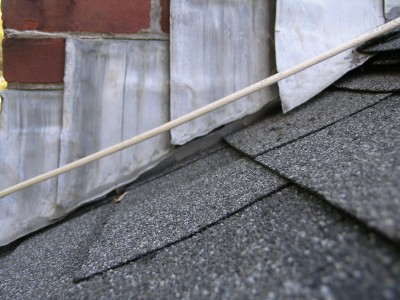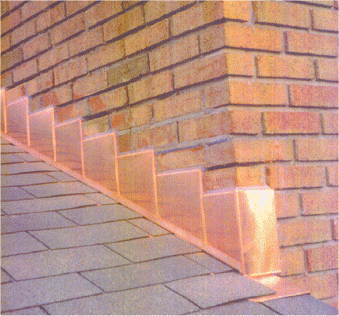A Leading Cause of Chimney Leaks: Flashing
 Flashing issues are among the most common causes of chimney leaks. Whether the problem is faulty chimney flashing or damaged chimney flashing, the resulting moisture damage to your home can be very expensive to fix. Leaks caused by failed flashing can be tough to spot until extensive damage has already been done, such as rotting wood and structural damage. An annual chimney inspection is a reliable way to routinely check that the flashing is working as it should.
Flashing issues are among the most common causes of chimney leaks. Whether the problem is faulty chimney flashing or damaged chimney flashing, the resulting moisture damage to your home can be very expensive to fix. Leaks caused by failed flashing can be tough to spot until extensive damage has already been done, such as rotting wood and structural damage. An annual chimney inspection is a reliable way to routinely check that the flashing is working as it should.
Flashing is important because it is where the connection between the chimney and the roof is made watertight. Many builders apparently have difficulty installing flashing because improper installation is a common cause of chimney leaks. Poor installation occurs frequently when a new roof has been built on an existing home.
Flashing is made with various types of metal, and the region you live in is a major factor in determining which the preferred flashing material is. The typical choices in the south, for instance, are galvanized steel and aluminum; the high-end choice is copper. No matter where you reside, copper is by far the best material to use for flashing. Copper can be soldered in order to create a more watertight connection, and it is very durable. Chimney masons in the northeast favor using lead flashing because it is soft enough that it easily bends to shape.
While the material used for flashing is of significance, particularly as pertains to durability, the single most important factor which determines the effectiveness of flashing is installation. It is not easy to form the needed watertight connection between chimney and roof, and builders sometimes fail at the task.
There is a universal approach to installing flashing, and it involves installing two kinds of metal panel parts. The following are the basic steps for installing chimney flashing:
- What is done first is that step flashing or base flashing is installed underneath the shingles on the roof. The step flashing bends upward to lay flush against the chimney. Note: When our chimney professionals are inspecting chimneys, they check the flashing. It is not at all uncommon to find that these L-shaped panels have cracks and holes that cause leaking and moisture damage.
- Next in the installation is the addition of counterflashing. These metal panels bend downward over the step flashing. In order to cap or seal off the top of the base flashing, the counterflashing is embedded into the chimney mortar. Inadequate overlapping is one of the causes of faulty flashing and leakage.
- Corners are a difficult part of the installation process and have proven to be vulnerable parts of the flashing. Even high-quality workmanship often requires the addition of urethane caulking, to make the waterproofing process complete.
Not all flashing problems require extensive repairs. Sometimes additional caulking is all that is needed.
One of the most problematic aspects of leaks caused by flashing is that they can be difficult to detect. Before homeowners are aware that there is a problem of any kind, their home can sustain various types of damage, such as wood rot, roof damage, attic damage, ceiling damage, and structural damage.
 Here are a few preventative measures:
Here are a few preventative measures:
- Have your chimney inspected annually by our certified chimney professionals, who know what to look for, as far as possible leaks and other kinds of deterioration associated with the chimney.
- Periodically check in your attic where the chimney is for signs of leakage.
- Sometimes more is needed than chimney flashing to sustain a waterproof seal between the roof and chimney. A “cricket,” which is a small diversion roof, can help to prevent a chimney from being deluged when it rains; this is most helpful on steep roofs.
A leaky chimney is not always caused by flashing damage. Call our certified professional chimney technicians today to inspect your chimney and find problems before they cause damage that carries a price tag that’s through the roof.








